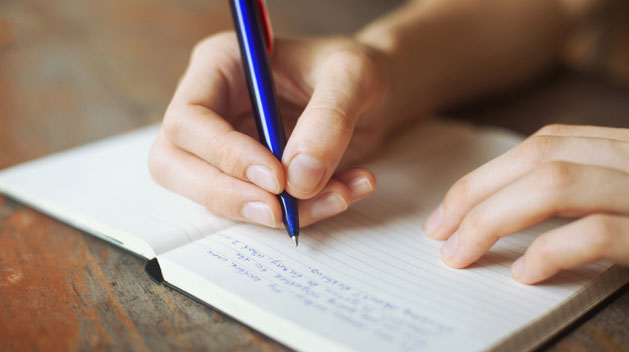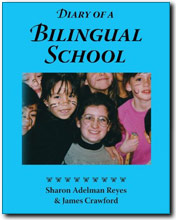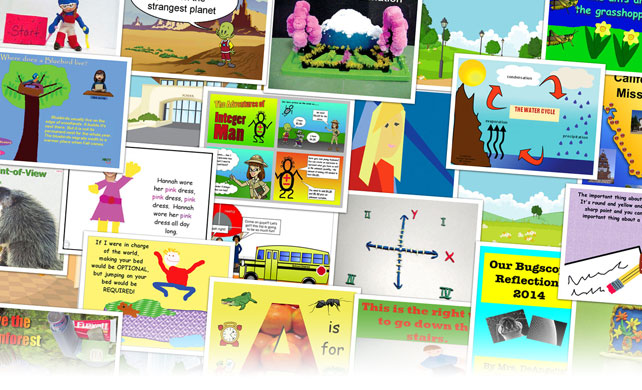
Promote language acquisition and build inventors who can think creatively

Worms, spilled paint, and engaged second-grade students are all things you will discover in the Diary of a Bilingual School. Authors Dr. Sharon Reyes and James Crawford successfully incorporate the tenets of constructivist-based curriculum with the research and strategies behind a successful dual-language program as they share a year at the Inter-American Magnet School in Chicago.
This is the first book I have read on the subject of bilingual education that doesn’t exclusively focus on the language acquisition aspect of an effective bilingual program. In this short, approachable book, the research behind good teaching practices and language learning are intermingled with student stories, research, and learning strategies. The authors, drawing on their extensive professional and personal backgrounds in bilingual education, expertly describe what an effective dual-language learning environment looks and sounds like. They do so by retelling and reflecting upon the learning experiences within an authentic dual-language classroom setting.
Many of the learning activities highlighted in the book focus on students working collaboratively to create, share, and discuss projects with their classmates and family members outside of school. Readers are taken on a virtual journey through the lifecycle of insects and other innovative activities that pique student interest and motivate them to learn more about the subject. All the while, the authors point out how important curricular knowledge and language development can be increased through a natural, uncontrived format. The biggest treat for me was reading the dialog that took place between the students while actively participating in their curriculum activities. The students’ questions and answers serve as perfect segues for the authors to highlight important benefits and research throughout the book, and the exchanges serve to acknowledge and validate students’ voices and opinions, an aspect often missing from an academic approach. The authors also revisit these students 15 years after their one-year research is complete so that readers can get a sense of students’ accomplishments as adults.
If you are looking for the definitive guide to increasing test scores in a bilingual setting, this book is not for you – a fact stated early on by the authors themselves. This is also not a book for people who, deep down, do not think learning should be fun, messy, or noisy. Much of this book details the mess, right down to spilled bottles of paint during one of the many art projects.

Who IS this book for, then? It’s great for practitioners and parents who are looking to get a sense of what a real-world dual-language environment looks like. It focuses on constructivist projects, rather than drill-and-kill learning activities. The book explores a truly student-centered bilingual learning environment. Beverly Falks, one of the practitioners quoted in the book, states that “learning is something that a learner does, not something that is done to the learner.” This concept of students as producers of language and knowledge is consistent throughout the book. Another important concept included by the authors, in this case in the form of a quote from bilingual expert Stephen Krashen, is that language is acquired “incidentally, involuntarily, subconsciously, and effortlessly.” If you believe, like I do, that learning and knowledge isn’t poured into students but rather seeps in as students are engrossed in meaningful contexts, this book is for you.
As a former bilingual educator, I found Diary of a Bilingual School to be both refreshing and inspiring. It highlights and validates the types of hands-on activities I was able to do when I taught in Central America: activities that promote critical thinking and language production, that research lead to deeper content understanding and retention, and that engender a joy for learning.
As you read this review, students somewhere are bubbling in their answers on one standardized test or another. Certainly many students learn to master these fact sheets, but I’m left wondering, just as one of the students from the Inter-American Magnet School wondered, how many 21st century robots we’re creating in classrooms that are devoted to skill-based worksheets rather than engaging, thought provoking authentic learning opportunities.
If you are interested in learning how educators and parents can promote language acquisition, creating inventors who think creatively and (gasp!) even achieve excellent results on academic tests, this is the book for you.
Creative classroom ideas delivered straight to your in box once a month.
Engage students in both language and core content acquisition through creative technology tools.

Get this FREE guide that includes:

What can your students create?

Wixie
Share your ideas, imagination, and understanding through writing, art, voice, and video.

Rubric Maker
Create custom rubrics for your classroom.

Pics4Learning
A curated, copyright-friendly image library that is safe and free for education.

Wriddle
Write, record, and illustrate a sentence.

EDU ToDo
Interactive digital worksheets for grades K-8 to use in Brightspace or Canvas.
Topics